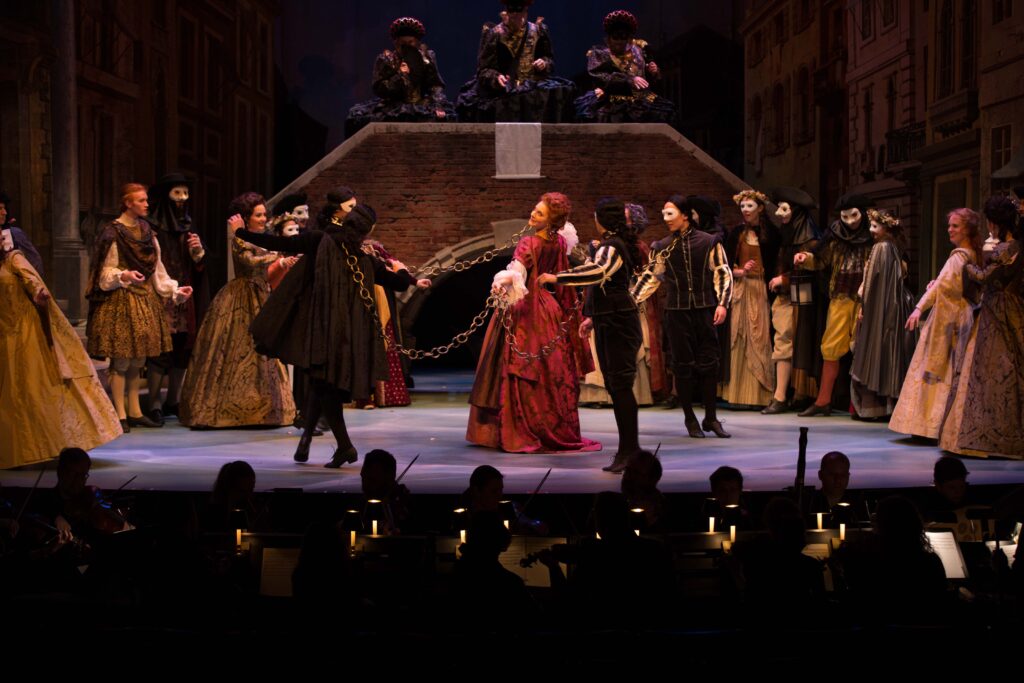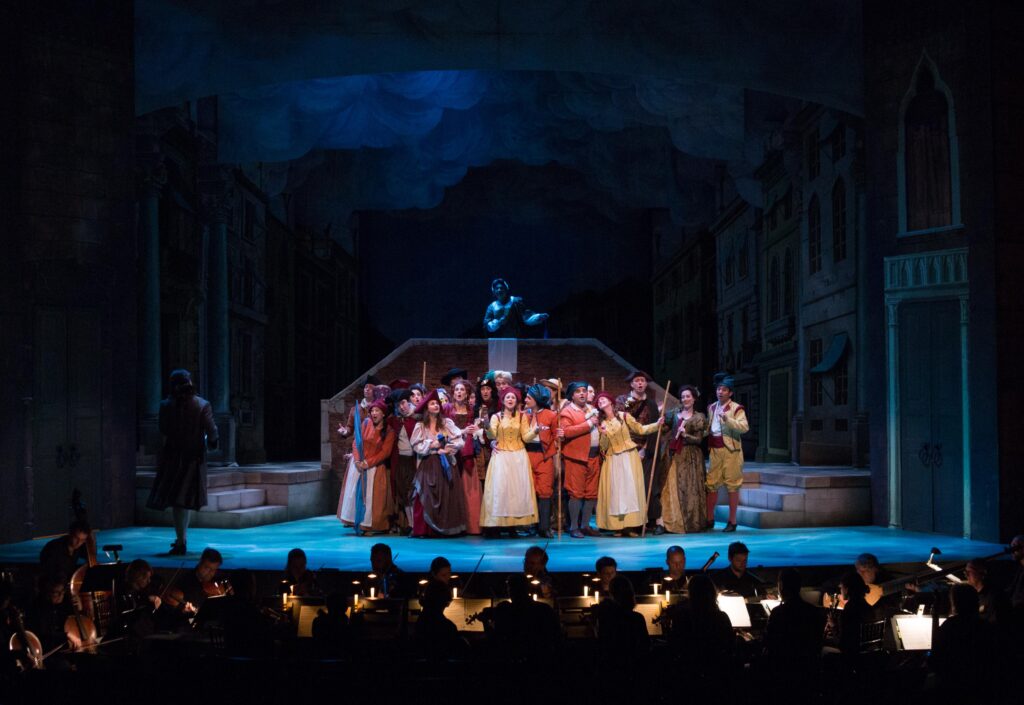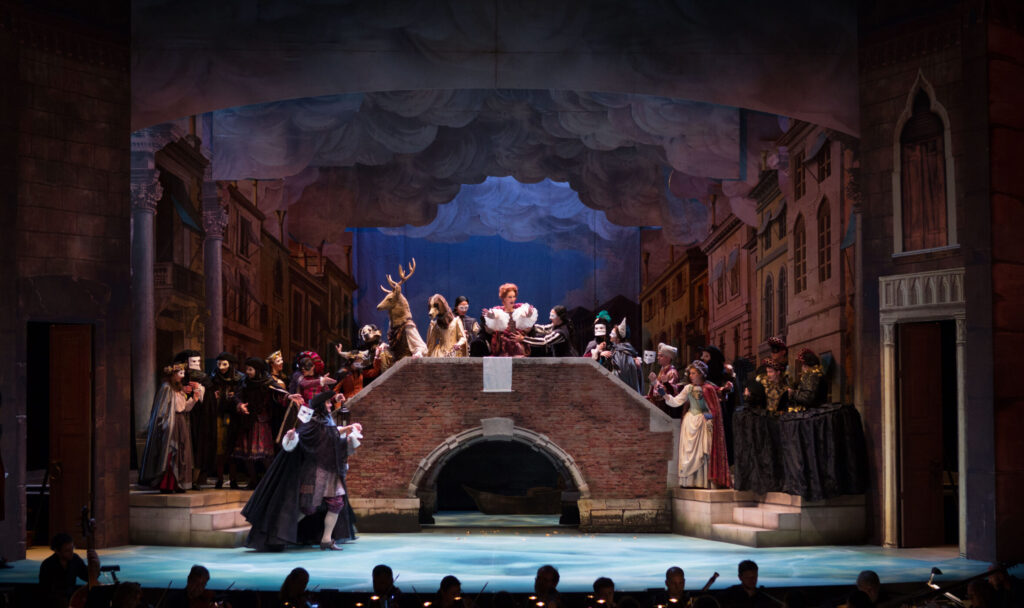Opera Director & Designer
Le Carnaval de Venise
André Campra (1660–1744)
In 1697, composer André Campra emerged as a leading figure in the evolution of French opera. Critics of the time observed that “his genius […] followed the steps of Lully & got close to him.” However, Campra’s talent was not fully realized in the tragédie en musique style pioneered by Jean-Baptiste Lully, nor in his religious music, which had earned him the position of Maître de Chapelle at Notre Dame. Instead, Campra’s innovation came in the form of a new genre, one that would reshape the future of French opera.


Boston Early Music Festival
Cutler Majestic Theater , Boston
Premiere June 11, 2017
Artists
Paul O’Dette, Musical Director
Stephen Stubbs, Musical Director
Gilbert Blin, Stage Director & Set Designer
Robert Mealy, Concertmaster
Melinda Sullivan, Dance Director
Caroline Copeland, Choreographer
Anna Watkins, Costume Designer
Christopher Ostrom, Lighting Designer
The Birth of Opéra-Ballet: “L’Europe Galante”
Campra’s groundbreaking work, L’Europe galante, premiered in 1697 in collaboration with librettist Antoine Houdar de La Motte. This opera introduced a new form—the opéra-ballet—which was a departure from the traditional opera of the time. Rather than focusing on tragedy, Campra integrated elements of dance and comedy. The opera was composed of several autonomous plots, or Entrées, all connected by a central European theme. By elevating the role of dance and introducing comedic elements, Campra opened up new creative possibilities that would influence both his own work and the broader operatic landscape.
 Mireille Lebel, La Fortune. Boston Early Music Festival 2017, photo Kathy Wittman
Mireille Lebel, La Fortune. Boston Early Music Festival 2017, photo Kathy Wittman
Campra’s Continued Innovation: “Le Carnaval de Venise”
Two years later, Campra further developed the opéra-ballet form with the creation of Le Carnaval de Venise in 1699. This new opera was partly inspired by the Venetian ball featured in the L’Italie Entrée of L’Europe galante, which Campra expanded into a full-length opera. Le Carnaval de Venise highlighted the Mediterranean influence in Campra’s work and solidified his ability to blend French and Italian musical styles.
Collaboration with Jean-François Regnard: A Unique Contribution
For Le Carnaval de Venise, Campra collaborated with Jean-François Regnard, a celebrated playwright known for his work with both the Comédie-Italienne and Comédie-Française. Regnard, traditionally associated with spoken theater, brought an innovative perspective to the opera. His libretto for Le Carnaval de Venise demonstrated a fresh approach to narrative structure, complementing Campra’s forward-thinking musical composition. This collaboration resulted in a work that successfully merged French and Italian traditions, while also incorporating classic and contemporary elements of opera.
 Boston Early Music Festival 2017, photo Kathy Wittman
Boston Early Music Festival 2017, photo Kathy Wittman
A Fusion of Italian and French Styles: Classic and Innovative
Le Carnaval de Venise stands as a significant work in the opéra-ballet genre, showcasing a fusion of Italian and French musical influences. Both Campra and Regnard sought to respond to the cultural and political context of their time, reflecting their patrons’ desire for reconciliation with Venice. The opera’s combination of traditional dramaturgical themes with inventive artistic elements created a work that was both accessible and sophisticated, resonating with audiences across Europe.
Gilbert Blin’s Historically Informed Staging at the 2017 Boston Early Music Festival
In 2017, Gilbert Blin, renowned for his historically informed approach to staging, revived Le Carnaval de Venise at the Boston Early Music Festival. Blin, serving as both stage director and set designer, emphasized historical accuracy in his interpretation of the opera. His production is based on research into the staging practices of Campra’s time, using period-appropriate design, costumes, and performance styles. This approach allowed audiences to experience the opéra-ballet much as it might have been performed in the late 17th century, preserving the original spirit of Campra’s work.
Read the entire chapter in Gilbert Blin’s thesis at Leiden University ⇒
Get in touch
Copyright
© 2024 Gilbert Blin, All rights reserved
